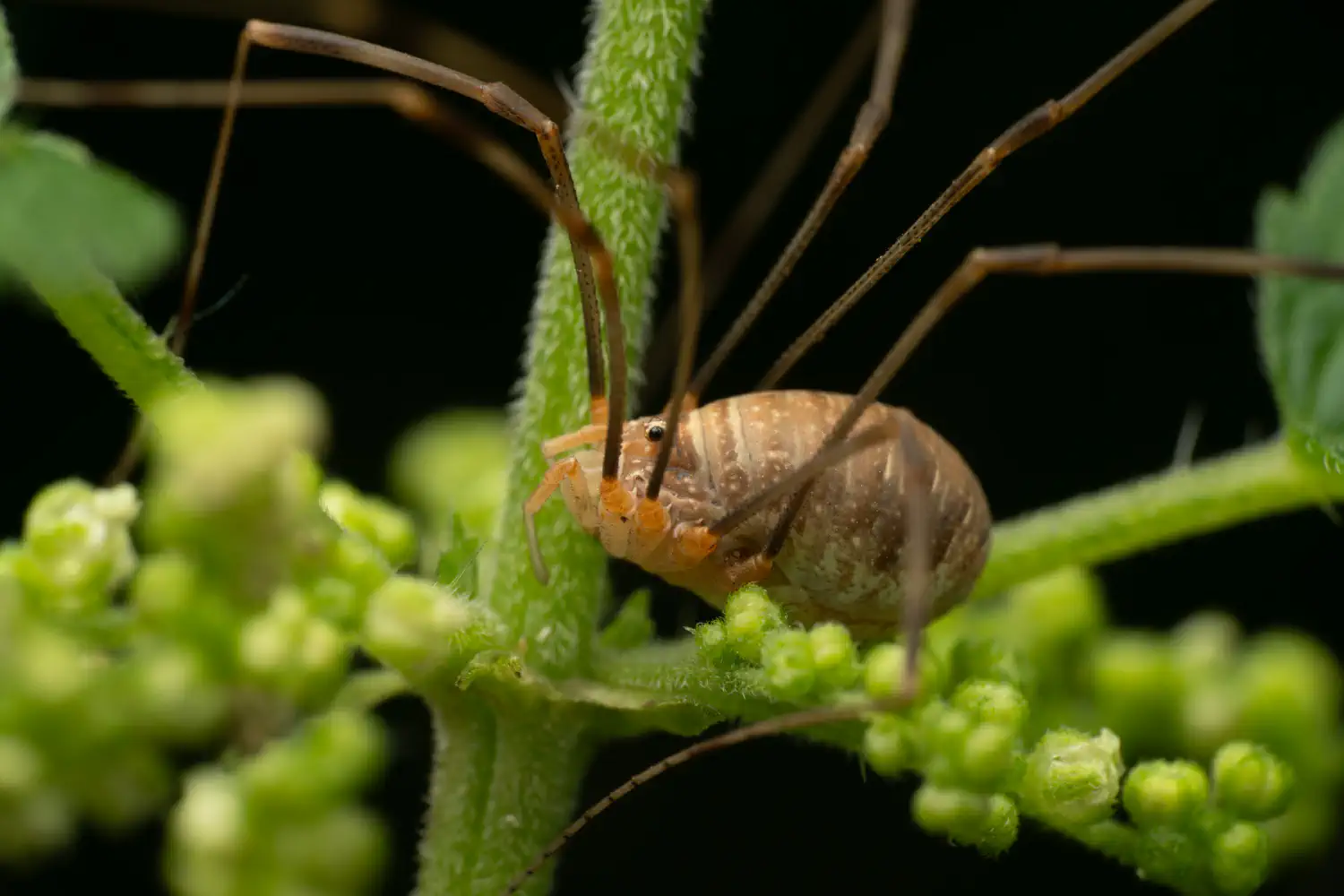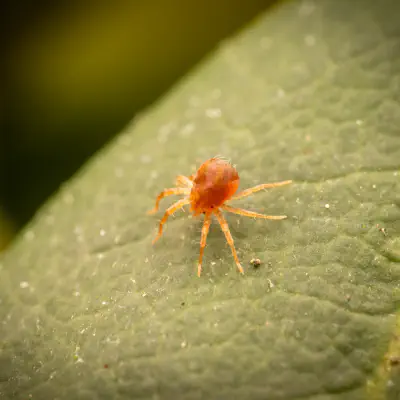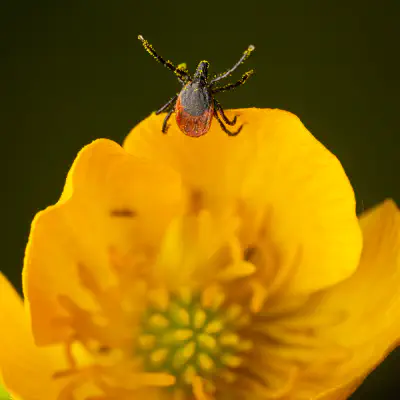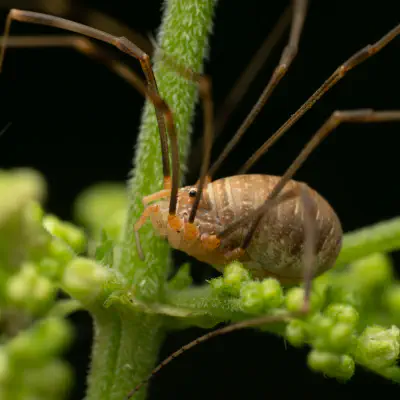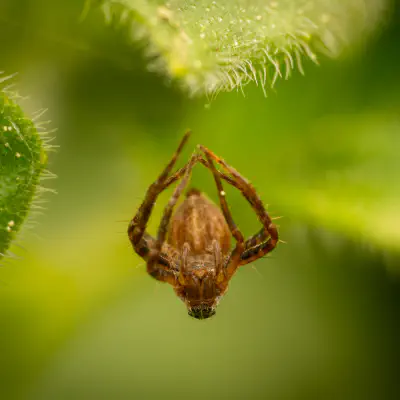Arachnids Lat. “Arachnida“
Arachnids are a class (Arachnida) of joint-legged invertebrate animals (arthropods), in the subphylum Chelicerata. All arachnids have eight legs, although the front pair of legs in some species has converted to a sensory function, while in other species, different appendages can grow large enough to take on the appearance of extra pairs of legs. The term is derived from the Greek word ἀράχνη (aráchnē), from the myth of the hubristic human weaver Arachne who was turned…
Hierarchy
Morphology
Almost all adult arachnids have eight legs, unlike adult insects which all have six legs. However, arachnids also have two further pairs of appendages that have become adapted for feeding, defense, and sensory perception. The first pair, the chelicerae, serve in feeding and defense. The next pair, the pedipalps, have been adapted for feeding, locomotion, and/or reproductive functions. In scorpions, pseudoscorpions, and ricinuleids the pedipalps end in a pair of pinchers, while in whip scorpions, Schizomida, Amblypygi, and most harvestmen, they are raptorial and used for prey capture. In Solifugae, the palps are quite leg-like, so that these animals appear to have ten legs. The larvae of mites and Ricinulei have only six legs; a fourth pair usually appears when they moult into nymphs. However, mites are variable: as well as eight, there are adult mites with six or, like in Eriophyoidea, even four legs. While the adult males in some members of Podapolipidae have six legs, the adult females have only a single pair. Arachnids are further distinguished from insects by the fact they do not have antennae or wings. Their body is organized into two tagmata, called the prosoma and opisthosoma, also referred to as the cephalothorax and abdomen. However, there are questions about the validity of the latter terms. While the term cephalothorax implies a fused cephalon (head) and thorax, there is currently neither fossil nor embryological evidence that arachnids ever had a separate thorax-like division. Likewise, the ‘abdomen’ of many arachnids contains organs atypical of an abdomen, such as a heart and respiratory organs. The cephalothorax is usually covered by a single, unsegmented carapace. The abdomen is segmented in the more primitive forms, but varying degrees of fusion between the segments occur in many groups. It is typically divided into a preabdomen and postabdomen, although this is only clearly visible in scorpions, and in some orders, such as the mites, the abdominal sections are completely fused. A telson is present in scorpions, where it has been modified to a stinger, and into a flagellum in the Palpigradi, Schizomida (very short) and whip scorpions. At the base of the flagellum in the two latter groups there are glands which produce acetic acid as a chemical defense. Except for a pair of pectines in scorpions, and the spinnerets in spiders, the abdomen has no appendages. Like all arthropods, arachnids have an exoskeleton, and they also have an internal structure of cartilage-like tissue, called the endosternite, to which certain muscle groups are attached. The endosternite is even calcified in some Opiliones.
Locomotion
Most arachnids lack extensor muscles in the distal joints of their appendages. Spiders and whip scorpions extend their limbs hydraulically using the pressure of their hemolymph. Solifuges and some harvestmen extend their knees by the use of highly elastic thickenings in the joint cuticle. Scorpions, pseudoscorpions and some harvestmen have evolved muscles that extend two leg joints (the femur-patella and patella-tibia joints) at once. The equivalent joints of the pedipalps of scorpions though, are extended by elastic recoil.
Physiology
There are characteristics that are particularly important for the terrestrial lifestyle of arachnids, such as internal respiratory surfaces in the form of tracheae, or modification of the book gill into a book lung, an internal series of vascular lamellae used for gas exchange with the air. While the tracheae are often individual systems of tubes, similar to those in insects, ricinuleids, pseudoscorpions, and some spiders possess sieve tracheae, in which several tubes arise in a bundle from a small chamber connected to the spiracle. This type of tracheal system has almost certainly evolved from the book lungs, and indicates that the tracheae of arachnids are not homologous with those of insects. Further adaptations to terrestrial life are appendages modified for more efficient locomotion on land, internal fertilisation, special sensory organs, and water conservation enhanced by efficient excretory structures as well as a waxy layer covering the cuticle. The excretory glands of arachnids include up to four pairs of coxal glands along the side of the prosoma, and one or two pairs of Malpighian tubules, emptying into the gut. Many arachnids have only one or the other type of excretory gland, although several do have both. The primary nitrogenous waste product in arachnids is guanine. Arachnid blood is variable in composition, depending on the mode of respiration. Arachnids with an efficient tracheal system do not need to transport oxygen in the blood, and may have a reduced circulatory system. In scorpions and some spiders, however, the blood contains haemocyanin, a copper-based pigment with a similar function to haemoglobin in vertebrates. The heart is located in the forward part of the abdomen, and may or may not be segmented. Some mites have no heart at all.
Diet and digestive system
Arachnids are mostly carnivorous, feeding on the pre-digested bodies of insects and other small animals. But ticks, and many mites, are parasites, some of which are carriers of disease. The diet of mites also include tiny animals, fungi, plant juices and decomposing matter. Almost as varied is the diet of harvestmen, where we will find predators, decomposers and omnivores feeding on decaying plant and animal matter, droppings, animals and mushrooms. The harvestmen and some mites, such as the house dust mite, are also the only arachnids able to ingest solid food, which exposes them to internal parasites, although it is not unusual for spiders to eat their own silk. And one species of spider is mostly herbivorous. Scorpions, spiders and pseudoscorpions secrete venom from specialized glands to kill prey or defend themselves. Their venom also contains pre-digestive enzymes that helps breaking down the prey. The saliva of ticks contains anticoagulants and anticomplements, and several species produce a neurotoxin. Arachnids produce digestive enzymes in their stomachs, and use their pedipalps and chelicerae to pour them over their dead prey. The digestive juices rapidly turn the prey into a broth of nutrients, which the arachnid sucks into a pre-buccal cavity located immediately in front of the mouth. Behind the mouth is a muscular, sclerotised pharynx, which acts as a pump, sucking the food through the mouth and on into the oesophagus and stomach. In some arachnids, the oesophagus also acts as an additional pump. The stomach is tubular in shape, with multiple diverticula extending throughout the body. The stomach and its diverticula both produce digestive enzymes and absorb nutrients from the food. It extends through most of the body, and connects to a short sclerotised intestine and anus in the hind part of the abdomen.
Senses
Arachnids have two kinds of eyes: the lateral and median ocelli. The lateral ocelli evolved from compound eyes and may have a tapetum, which enhances the ability to collect light. With the exception of scorpions, which can have up to five pairs of lateral ocelli, there are never more than three pairs present. The median ocelli develop from a transverse fold of the ectoderm. The ancestors of modern arachnids probably had both types, but modern ones often lack one type or the other. The cornea of the eye also acts as a lens, and is continuous with the cuticle of the body. Beneath this is a transparent vitreous body, and then the retina and, if present, the tapetum. In most arachnids, the retina probably does not have enough light sensitive cells to allow the eyes to form a proper image. In addition to the eyes, almost all arachnids have two other types of sensory organs. The most important to most arachnids are the fine sensory hairs that cover the body and give the animal its sense of touch. These can be relatively simple, but many arachnids also possess more complex structures, called trichobothria. Finally, slit sense organs are slit-like pits covered with a thin membrane. Inside the pit, a small hair touches the underside of the membrane, and detects its motion. Slit sense organs are believed to be involved in proprioception, and possibly also hearing.
Reproduction
Arachnids may have one or two gonads, which are located in the abdomen. The genital opening is usually located on the underside of the second abdominal segment. In most species, the male transfers sperm to the female in a package, or spermatophore. The males in harvestmen and some mites have a penis. Complex courtship rituals have evolved in many arachnids to ensure the safe delivery of the sperm to the female. Members of many orders exhibit sexual dimorphism. Arachnids usually lay yolky eggs, which hatch into immatures that resemble adults. Scorpions, however, are either ovoviviparous or viviparous, depending on species, and bear live young. Also some mites are ovoviviparous and viviparous, even if most lay eggs. In most arachnids only the females provide parental care, with harvestmen being one of the few exceptions.
See also
Arachnophobia Endangered spiders Glossary of spider terms List of extinct arachnids
External links
Arachnid, Natural History Museum, London
Ancestry Graph
Further Information
„Arachnids“ on iNaturalist.org
Copyright

This article uses material from the Wikipedia article Arachnida the free encyclopedia Wikipedia which is released under Creative Commons Attribution-ShareAlike 4.0 International License). On Wikipedia a list of authors is available.

Little beings in print
Order our calendars and books today!
Compiled with love. Printed sustainably. Experience our little beings even more vividly in print. All our publications are available for a small donation.

